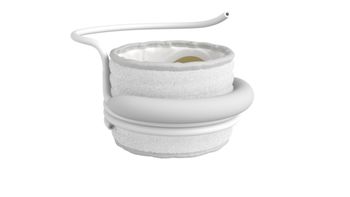
5 retirement-planning challenges for physician-owned practices — and 5 solutions
Recent events have made it even more challenging for physicians to forecast and plan for their retirements.
Planning for retirement is a daunting challenge for anyone, but physician-practice owners face some distinct hurdles unmatched by most other careers.
Between medical school, residency, and fellowships, physicians don't realize their full earning power until later in life. In the context of retirement planning, they're already starting behind.
Then factor in that many emerge from med school with about
Those disadvantages are pretty constant for physician-practice owners but recent events have made forecasting and planning for their retirements even more challenging.
Many practices aren't
A labor shortage is driving up salaries and wages, in turn making practices pay more in retirement-matching contributions. Last year marked the first time a cardiologist client of mine took money out of his portfolio instead of adding to it. Why? The cost of adding two new physicians to his practice was higher than expected.
To add to the pain physicians are feeling, rising interest rates are hurting their practices’ real estate values. Finally, if taxes rise as I expect, owners will save even less.
All these challenges are converging at once, making retirement planning harder than ever before. But there are some ways to manage through the morass. Here are a few.
Start early, no matter what: Retirement planning necessarily entails questions of time. We don't know how long retirement will last, but we do control when we start saving. Given the distinct disadvantages physicians face, to the extent that they can manage to save early while they are still building their practices and paying down student loans, the better their prospects. I've seen too many owners take undue risks trying to catch up for lost time with their retirement savings.
Embrace tech: Owners worried about cash flow and retirement readiness must consider the role of technology in their practice. Technology is an increasingly central part of the modern practice, from improving the delivery model to streamlining operations. If you haven’t already, you should be looking at a technology investment that addresses two sides of the cash flow question: improving physician productivity while potentially cutting expenses through headcount reduction.
Rethink employee retirement plans: Take a critical look at your retirement-plan contributions for employees. Many practice owners start out by offering self-employment plans or defined-contribution plans like 401(k)s. Along the way, they might add profit-sharing plans. But over time, as the practice grows and cash flow increases, owners should instead consider offering cash-balance plans or defined-benefit plans to their employees. These typically allow owners to set aside more money on a pretax basis.
There are tradeoffs, of course, since expanding savings capacity will also increase the employer's matching obligations, so it will become an individual calculus whether increasing the retirement-savings rate for the individual owner offsets the matching costs. The numbers can be substantial. I have seen clients use cash-balance plans to contribute $50,000 a year to their retirement, and I've seen one client be able to save $400,000 each year.
Consider leasing real estate: Physician owners frequently own the real estate in which their practice operates, but with interest rates on the rise, they're getting squeezed there, too.
One potential solution to the real estate challenge is to shift to a leasing arrangement from ownership. This won't work for everyone — commercial real estate markets vary widely. But with acquisition costs increasing, the question is whether the appreciation of the property is enough to offset a potentially lower monthly outflow for a lease. Speaking generally, the economics of leasing have begun to look more favorable the past couple years.
Plan for higher taxes: Retirement planning is an inherently future-oriented process, which means it's important to keep an eye on what policy changes could be coming from Washington. For the last few years, high earners like physician owners have enjoyed favorable tax rates owing to the Trump tax cuts. I'm not in the prediction business, but does anyone expect further cuts for the top income brackets? A safer bet, or at least a contingency to plan for, would be some form of rate increase.
Consider selling: Finally, for later-career physician owners, selling the practice to a larger healthcare organization can be a smart way to realize a significant cash infusion. It's important to understand that not all medical specialties are valued the same, so an ophthalmologist or a cardiologist can likely expect a higher multiple for their practice than, say, a primary care physician. There are tradeoffs here. Consider a successful urologist making $700,000 a year. They sell their practice to a larger organization for $3 million, but then see their annual income drop to $500,000. The doctor's annual saving power has been diminished by 29%, but they now have a substantial amount of cash on hand. Is it worth it, given their time horizon? For many owners, the answer is yes.
Osman R. Minkara is Founder and CEO of
Newsletter
Stay informed and empowered with Medical Economics enewsletter, delivering expert insights, financial strategies, practice management tips and technology trends — tailored for today’s physicians.








